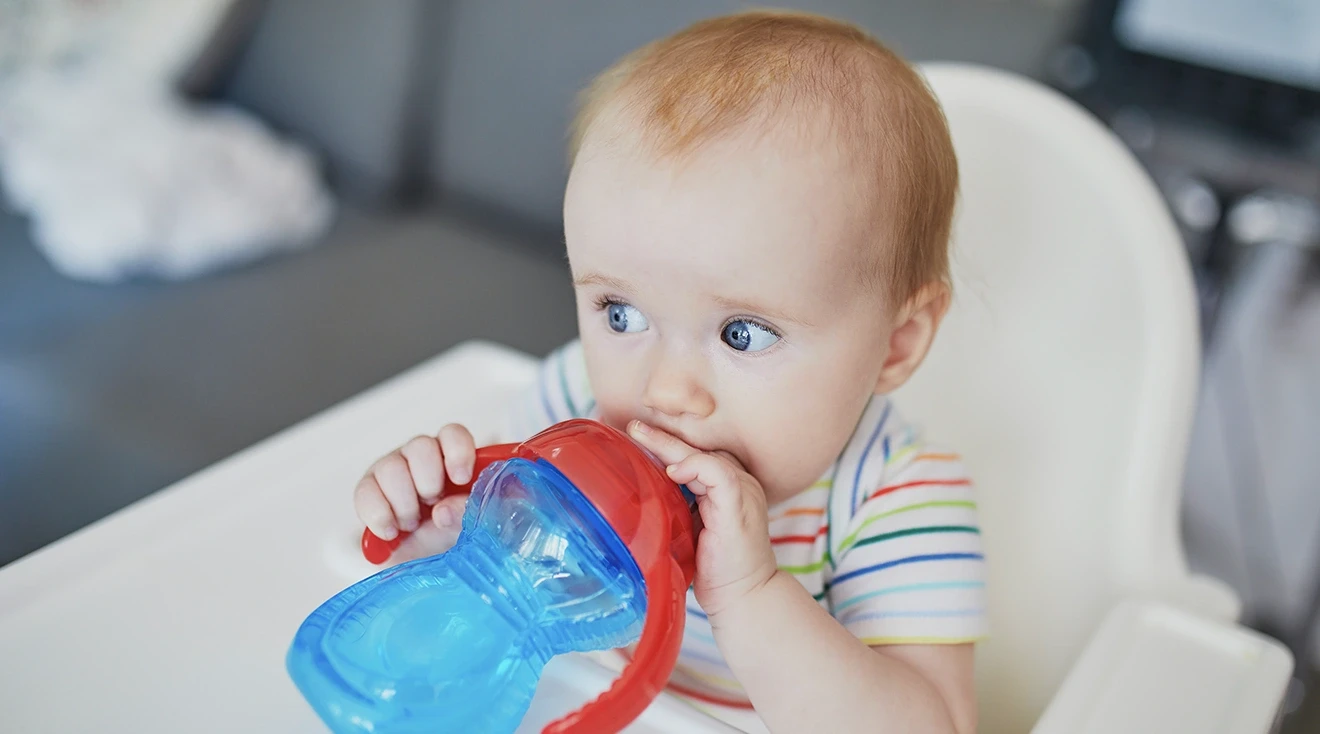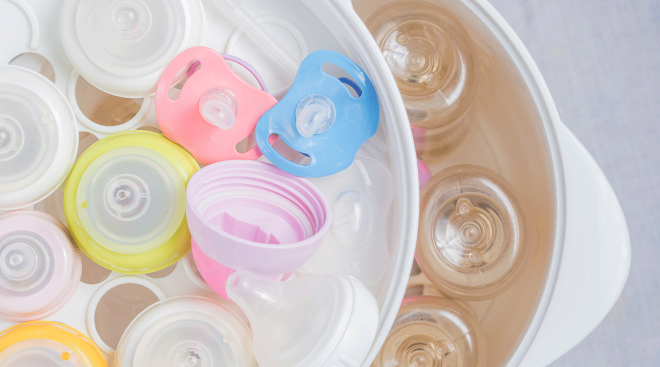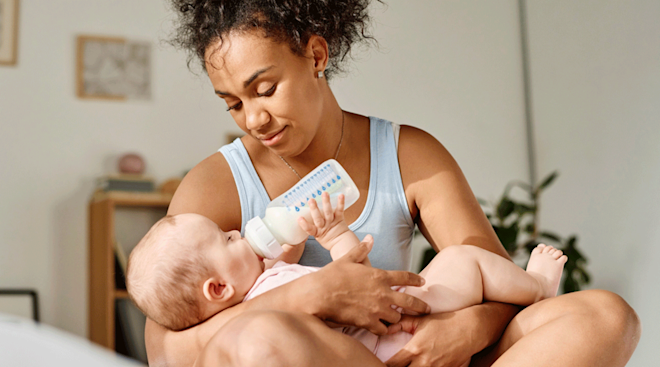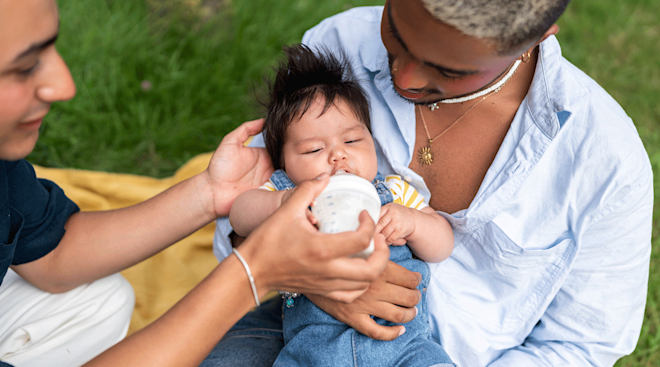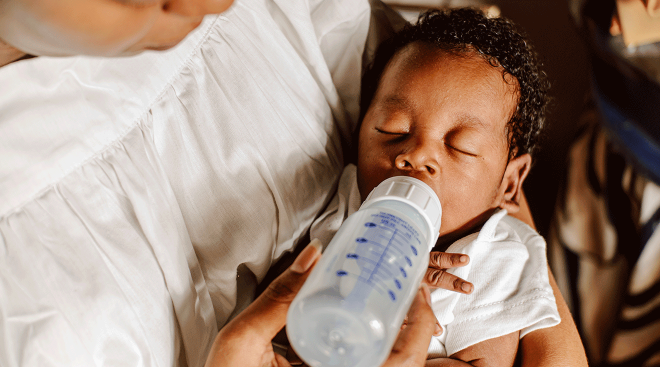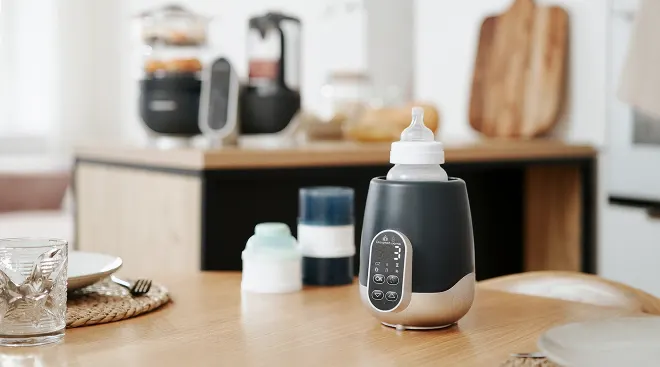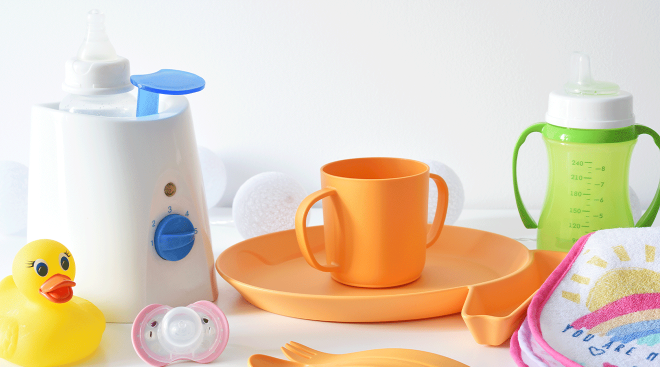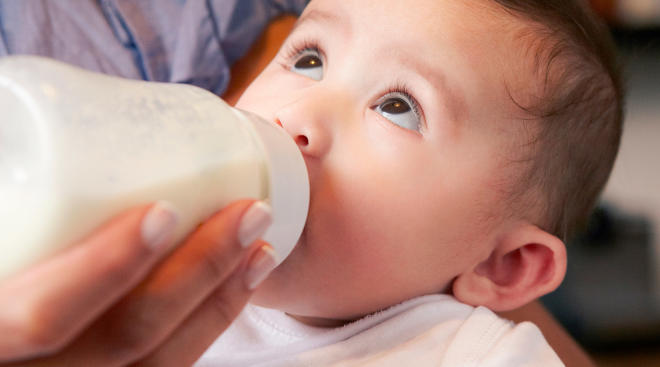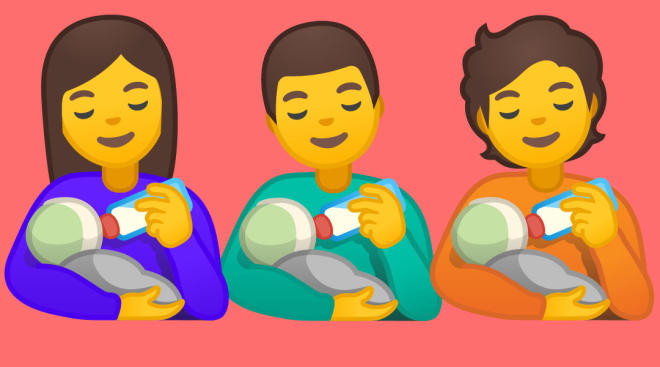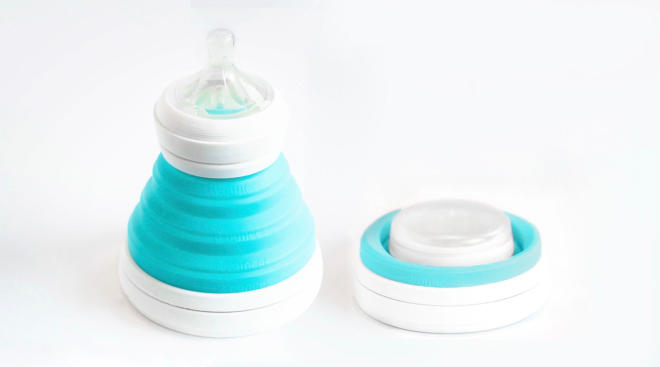Bye-Bye Bottle: How to Transition From Bottle to Cup
A lot of babies love their bottle—but there comes a time to kick the habit and transition to a cup. This can be challenging for baby, since bottles are often a source of comfort. (It can also be emotional for you, since it can feel like the end of babyhood!) If you’re scratching your head over how to wean baby off the bottle, fear not: A few simple tips can help make the process relatively painless for everyone involved.
There are a few important reasons why bottle weaning baby is important. For starters, prolonged bottle use “significantly increases” the risk for tooth decay and can increase the odds of dental issues like an overbite or tooth protrusion, says Ashanti Woods, MD, a pediatrician at Baltimore’s Mercy Medical Center.
Bottles can also promote “snacking” in toddlers, adds Daniel Hall, MD, a pediatrician at the Massachusetts General Hospital Revere Healthcare Center. “This can contribute to excessive weight gain, or for some toddlers, poor growth when they rely on the bottle instead of other solid foods.”
Toddlers tend to use bottles for comfort, just like pacifiers. It’s important to teach them to learn how to manage their feelings in a way that’s not linked to eating or drinking, Hall says. “In this way, weaning from the bottle can help your toddler to learn new ways to seek comfort when they’re dealing with big feelings,” he says.
The American Academy of Pediatrics (AAP) recommends completing the transition from bottle to cup between 12 and 18 months. This means ideally offering baby a cup around 6 months, or when they start solid foods. If you start early, bottle weaning will be smoother and more gradual. “The sooner you do it, the less stubborn they’ll be,” says Danelle Fisher, MD, FAAP, chair of pediatrics at Providence Saint John’s Health Center in Santa Monica, California.
Bottle weaning schedule
When weaning from bottle, there’s no need to go cold turkey. Sophia Sarris, RN, BSN, IBCLC, a pediatric nurse, lactation consultant and founder of Wonderlove Lactation in the Atlanta area, suggests first weaning off the morning bottle over the course of a week or so.
“The easiest one to drop first is the morning one because babies wake up hungry,” Sarris says. “You can take them straight to food instead of doing a bottle and offer milk in a cup. Once they start eating and then they get thirsty, they’ll be more receptive to a cup than [they would be] before their nap.”
After successfully cutting out the morning bottle, you can work to phase out the second, midday or “lunch,” bottle, says Sarris. Then, you can gradually work on the rest of them.
The AAP suggests a slightly different timeline: Keep the bottle at mealtimes (at first), while gradually transitioning away at other times.
When to wean baby off the bottle at night
The toughest bottle to quit is often the nighttime bottle, as it’s usually ingrained into your little one’s routine and can be very soothing. Sarris says that it’s best to give it two weeks before baby starts to adapt. You can also transition by occasionally providing water instead of milk. “Start by offering the same bottle but filled with water and then slowly transition to a cup of water, still giving them their milk at dinner or a before-bedtime snack to ease the transition,” she suggests.
Another hack to kick that nighttime bottle: Sarris recommends slowly decreasing the amount of milk. “If baby is falling asleep before the bottle’s finished, or if they’re not taking as much as they used to, just start decreasing the volume,” she says.
While it might take longer (which is okay!), an important reason to wean baby off the bottle at night is to prevent tooth decay. “You really don’t want to put baby to bed after they’ve had formula or milk without cleaning their teeth,” says Sarris.
Going from a bottle to a cup doesn’t mean you need to stop giving baby breast milk or formula, Fisher says. You can give them both in a sippy cup or cup with a straw. In fact, she recommends it. “A lot of families offer water in a sippy cup right away, and that can make the transition tougher,” she says.
There are plenty of options out there for beginner cups, but they largely fall into two camps: Sippy cups and ones with a straw. Either is fine at first, but if you notice that your child’s upper teeth are arched, a cup with a straw is likely the better option, advises Woods. You can also offer an open cup, which the AAP recommends transitioning to before the age of 2.
However you decide to wean baby off their bottle, consistency is crucial. “Toddlers are programmed to explore and push their boundaries, but they need predictable limits to help them feel secure,” Hall says. So when your toddler refuses the morning cup and cries for a bottle, he suggests saying something like, “I know you want your bottle, but we use cups in the morning now. Do you want your cup? No? Okay, let’s go play then.” Show empathy, explain the choices and move on. “They will drink more next time, don’t worry,” Hall says.
Bottle weaning is not exactly an easy or straightforward process, so try to be patient with your little one—and yourself—when transitioning to cup drinking. That said, these tips from the pros should help the process go smoother:
- Go gradually. Eliminate bottles one feeding at a time, and take your time. “Be ready to offer extra snuggles, songs or bedtime stories so your child feels reassured, but learns to self-soothe without a bottle,” says the AAP.
- Bring both bottle and cup to the table. To make the transition smoother, Sarris suggests letting baby play with an empty cup while bottle-feeding. “Just start having the empty cup with you while they’re taking their bottle, and they can hold on to it, and then maybe [start] putting less in the bottle each time. … Then you can drop that [feeding] and start offering the cup instead,” she says.
- Be mindful of other milestones. Sarris says it’s harder to make a big change when baby is in the middle of learning another skill. “Once they’ve mastered walking, that’s usually a good time to make changes with their bottles, especially if they’re tired at night,” she says. “They’re more receptive if they’re thirsty or they’ll drink something different because they’re exhausted… But when they’re in the middle of learning, it’s not a good time to make changes in other ways.”
- Celebrate small successes. Offer baby praise when they show signs of progress.
- Involve everyone. Let daycare teachers, family and anybody else who helps you take care of baby know that baby’s learning how to drink from a cup—that way, they can follow the same routine, which will help ensure success.
The right way to bottle wean ultimately depends on baby’s temperament and needs. “Just like everything in life, there’s more than one way to do it,” Fisher says. And if you’re worried that baby’s timeline isn’t lining up with that of your friends’ babies or outside advice, Sarris says not to worry.
“Trust your gut, and your baby,” Sarris says. “If it’s really causing grief between the two of you, and you’re trying to take it away, they’re not ready yet. A month from now, it might be really easy.” Give yourself grace and recognize that it might be a process. Either way, bottle weaning will happen eventually.
Please note: The Bump and the materials and information it contains are not intended to, and do not constitute, medical or other health advice or diagnosis and should not be used as such. You should always consult with a qualified physician or health professional about your specific circumstances.
Plus, more from The Bump:
Danelle Fisher, MD, FAAP, is the chair of pediatrics at Providence Saint John’s Health Center in Santa Monica, California. Fisher received her medical degree from Albert Einstein College of Medicine of Yeshiva University and completed her internship and residency at the Children’s Hospital Los Angeles.
Daniel Hall, MD, is a pediatrician at the Massachusetts General Hospital Revere Healthcare Center. He earned his medical degree at the Boston University School of Medicine and completed his pediatrics residency at Mass General Hospital for Children.
Sophia Sarris, RN, BSN, IBCLC, has been a practicing pediatric nurse since 1991. She is also a licensed lactation consultant and has been in private practice since 2018. The founder and owner of Wonderlove Lactation Services in the Atlanta area, Sarris provides in-home and office lactation consultations, classes for expectant and new families and a free weekly support group for all mothers and babies.
Ashanti Woods, MD, FAAP, is a pediatrician at Mercy Family Care Physicians in Baltimore, Maryland. Woods received his medical degree from Howard University College of Medicine and completed his residency at the University of Maryland Hospital for Children. He is a fellow of the American Academy of Pediatrics.
Healthy Children (American Academy of Pediatrics), From Bottle to Cup: Helping Your Child Make a Healthy Transition, July 2023
Navigate forward to interact with the calendar and select a date. Press the question mark key to get the keyboard shortcuts for changing dates.
































